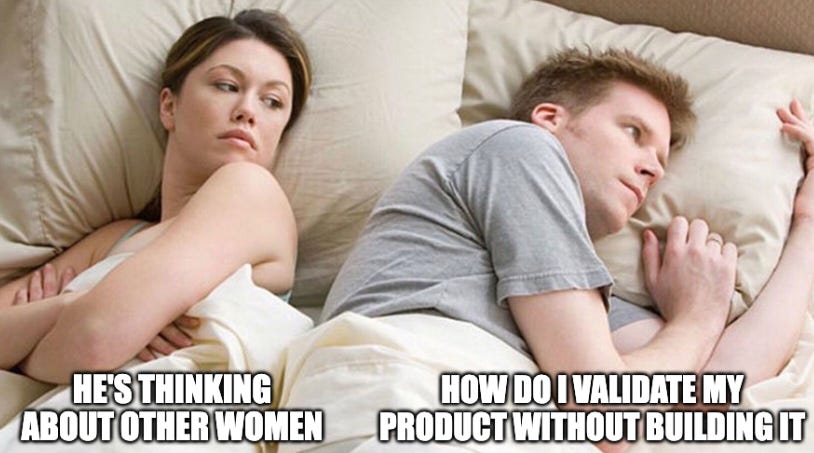Validating demand without a product (Part 2)
Cost-effective ways to test your hypothesis and validate market demand
Capital is scarce today, and validating your ideas frugally is in fashion (it always should have been, but as they say, hindsight is 20/20 🤷♂️).
We released Part 1 to this a couple of months ago, and we’re now back with two more ways to validate demand for your product without actually building it.
Build a viral tool that mirrors the intent of your product 🧑💻
Calm is a $2B meditation app. Their origins can be traced back to a simple website, which urged you to sit back and do nothing 🧘 for 2 minutes. This went viral on Twitter in early 2011.
But it doesn’t stop at making a website and driving traffic 🚗 in hopes of conversion. Here’s why it worked for Calm:
The website represents the crux of what would later become Calm. It encourages you to relax and be present - which is key to meditation and mindfulness
Only if you manage to sit through the 2 minutes without touching your mouse, keyboard, etc can you drop your email, filtering out low-intent traffic. Alex captured ~100k high-intent emails for Calm before building a product 🙌
A number of these emails on the website became early adopters for Calm. The closer the viral product is to your core product, the better your conversions.
Validating demand with a blog/newsletter 📕
The concept behind Product Hunt was simple: to build a community for product people to share, discover, and discuss new products.
But it would take quite a bit of effort 👷 to build the actual product. Ryan needed to validate that people actually wanted what he was building.
How could he bring his idea to market sooner to test his hypothesis?
Ryan logged into Linkydink (a tool to create a group and invite people to share links with other contributors and subscribers. Each day, the collection of posts is emailed to the group) and invited a few of his startup friends to contribute 🤝. He wrote a quick blog post and tweeted announcing this initial version of Product Hunt.
Within 20 minutes, he had an MVP 🤯. Here’s how it worked:
Contributors submit a link to their product discovery using Makeshift’s linkydink tool.
Once per day, the collection of products and links are emailed to subscribers with the attribution of who made the submission.
“I created this collaborative list called Product Hunt and invited maybe a couple dozen people I knew to join,” says Hoover. “They worked at startups, or were just people I knew. I didn’t market it heavily, but people seemed to like it right away. Soon, I had a couple hundred subscribers and people started coming up to me to talk about how much they enjoyed getting the email every day.”
In just two weeks, 170+ people 👩👦 subscribed to product discoveries from 30 hand-picked contributors, consisting of startup founders, VCs, and prominent bloggers.
This traction was encouraging, especially considering the minimalism of the “Linkydink MVP” and the lack of marketing.
Thanks for joining us! And while you’re here, remember, there are only 3 rules to life:
Be kind to everyone you meet
Don’t take yourself too seriously
Drink lots of water
See you next week!






